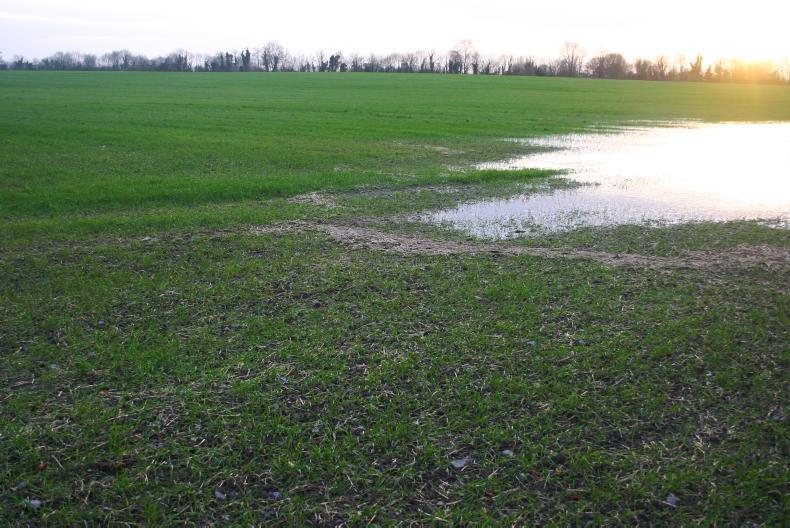A false dawn:
So much for any possible thoughts of getting work done over the past week and it may be no better for the week ahead. There appears to be rain in the forecast for most of the coming week but we will have to wait and see how much drying early March brings. For now, land is wet so we remain in planning rather than doing mode. Rainfall amounts have been variable over the past week, with most of the rain towards the west and north. In general, many tillage areas got much less, with many of them less than 20mm on Met Éireann figures but 40mm in Mullingar may also be the story for parts of the north, northeast and northwest. Soil temperatures are still 2°C to 3°C above normal but air temperatures are closer to normal for the time of year. It seems it will cool down for the next few days. As the days get longer and temperatures are on the margin for growth it is important to have nutrients available.
Fertiliser:
Many crops have still not received any spring fertiliser. For as long as the weather remains quite wet it would not be sensible to apply a big dose of nitrogen in particular for fear of substantial losses. Winter rape and barley are priorities for nitrogen application. Winter barley crops have become increasingly discoloured in recent weeks. If you can get out on to land, consider even a small amount of N to keep these crops ticking over. While we know that winter rape and barley need big amounts early, you can’t risk big losses either. This remains a risk until growth levels increase (perhaps in a week or two), with less risk of big amounts of rain shortly after application.
Lime remains the primary fertiliser to help get the most from soil and applied nutrients. Attempting to grow barley, beans or rape on low pH fields sets an immediate yield limit. Use granular lime to get pH corrected on such land.
Most winter crops have yet to receive their P and K and this will go on now. We must remember that previous big yields result in increased off-takes of P and K. An 11t/ha crop of winter barley plus straw is said to remove 42kg P/ha and 108kg K/ha while a 9 t/ha crop removes 34kg P/ha plus 88kg K/ha. Most fields are not receiving the balance of the extra P and K off-take to continuously support these higher yields. Continuing to remove nutrients without full replacement will drag down fertility and yield potential. Chopping straw occasionally will help to reduce K off-take.
Sulphur:
One of the additional challenges around an awkward spring is to get sulphur applied. This is important on all worn land that does not get regular organic fertilisers. Sulphur is important for the efficient use of N and a deficiency looks like a shortage of nitrogen. The quantities required for cereals are roughly 15-20kg S/ha for high yield in one early or multiple splits. Rape will need 30-40kg S/ha on worn land that promises good yield potential.
High sulphur nitrogen products are ASN or sulphate of ammonia. Alternatively use multiple applications of low-S products like CAN+S or Urea+S.






 This is a subscriber-only article
This is a subscriber-only article










SHARING OPTIONS: